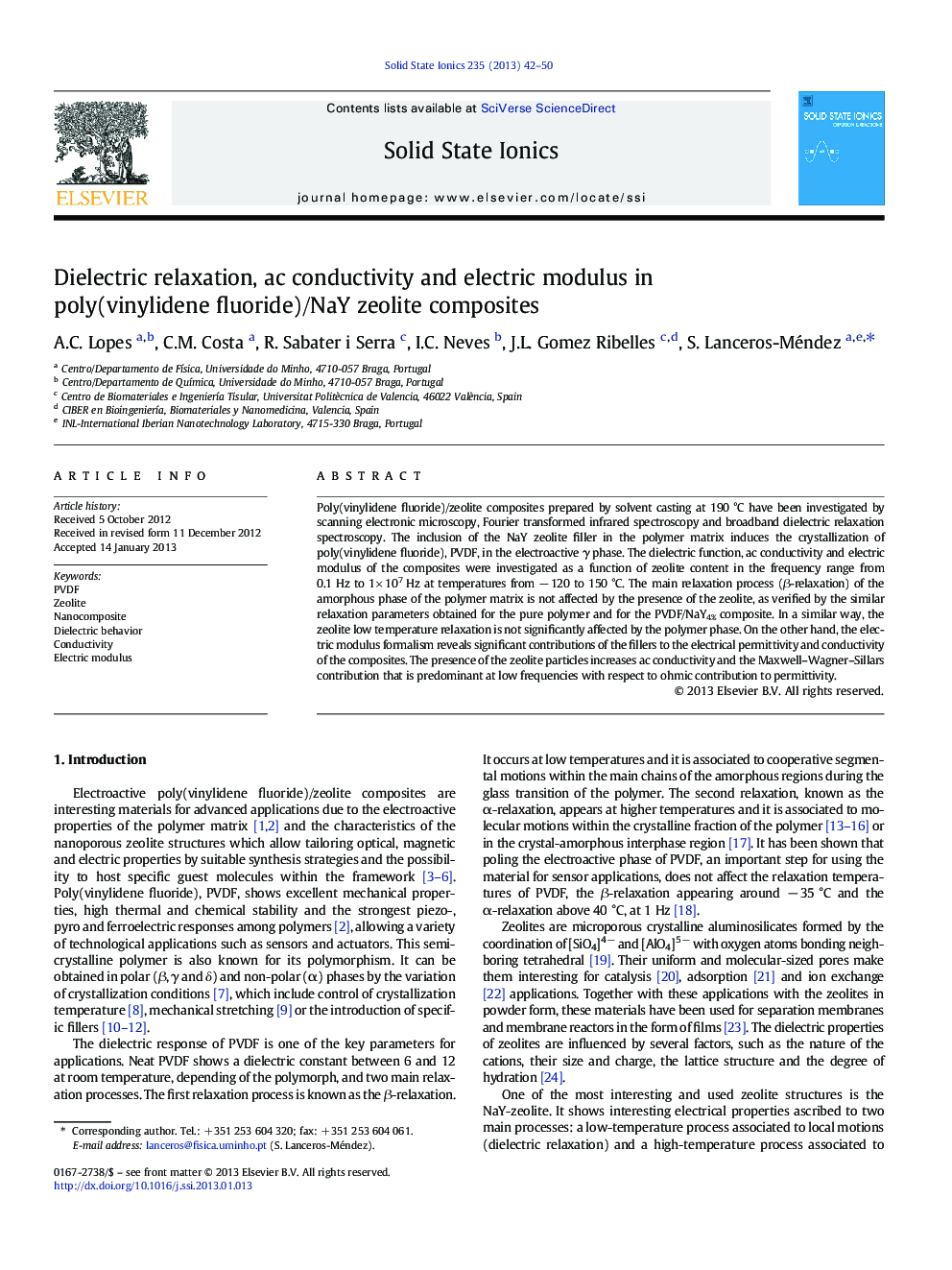| Article ID | Journal | Published Year | Pages | File Type |
|---|---|---|---|---|
| 1295913 | Solid State Ionics | 2013 | 9 Pages |
Poly(vinylidene fluoride)/zeolite composites prepared by solvent casting at 190 °C have been investigated by scanning electronic microscopy, Fourier transformed infrared spectroscopy and broadband dielectric relaxation spectroscopy. The inclusion of the NaY zeolite filler in the polymer matrix induces the crystallization of poly(vinylidene fluoride), PVDF, in the electroactive γ phase. The dielectric function, ac conductivity and electric modulus of the composites were investigated as a function of zeolite content in the frequency range from 0.1 Hz to 1 × 107 Hz at temperatures from − 120 to 150 °C. The main relaxation process (β-relaxation) of the amorphous phase of the polymer matrix is not affected by the presence of the zeolite, as verified by the similar relaxation parameters obtained for the pure polymer and for the PVDF/NaY4% composite. In a similar way, the zeolite low temperature relaxation is not significantly affected by the polymer phase. On the other hand, the electric modulus formalism reveals significant contributions of the fillers to the electrical permittivity and conductivity of the composites. The presence of the zeolite particles increases ac conductivity and the Maxwell–Wagner–Sillars contribution that is predominant at low frequencies with respect to ohmic contribution to permittivity.
► Polymer–zeolite composites are relevant for novel applications. ► The electrical properties of the composite play a critical role. ► The effect of zeolite content in the dielectric response of PVDF/NaY is evaluated. ► NaY zeolite induces the crystallization of PVDF in the γ phase. ► Dielectric properties and conductivity can be tailored by zeolite inclusion.
